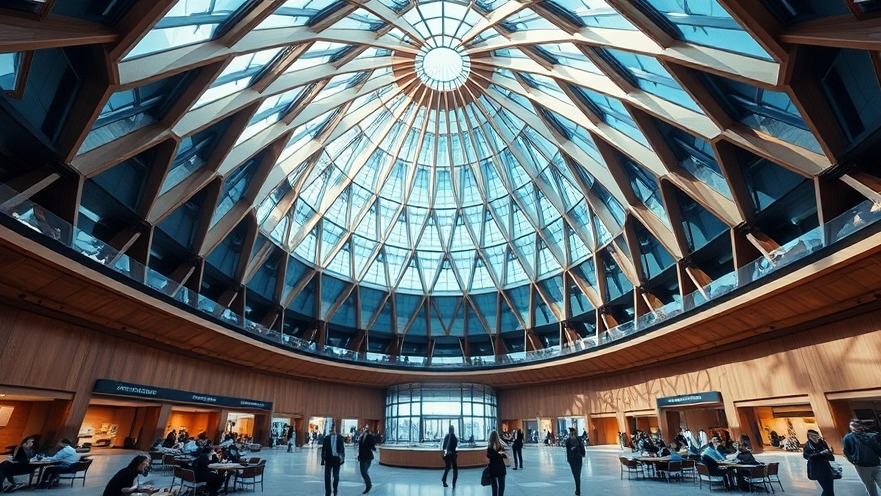
Introducing the Schwarzman Centre: A New Paradigm for Learning
As digital nomads, creating an inspiring and conducive workspace is vital for productivity and well-being. The recently completed Schwarzman Centre at the University of Oxford embodies this ethos, showcasing how modern architecture can significantly enhance not only learning but also collaboration and interaction among diverse academic disciplines.
The Heart of the Campus: A Four-Storey Atrium
At the center of the Schwarzman Centre lies a grand four-storey atrium, aptly named the Great Hall. This space is designed not just as a passageway but as a hub of activity where students, faculty, and the public can come together. The flexibility of this area, overlooking three upper floors of study desks, stimulates a communal atmosphere—opposing the isolation often felt in traditional workspaces. Here, individuals can exchange ideas, brainstorm, and create new pathways for learning and innovation.
Sustainability Meets Performance: The World's First Passivhaus Concert Hall
One of the standout features of the Schwarzman Centre is its dedication to sustainability, marked by the world’s first Passivhaus concert hall. This is part of a broader mission to meet rigorous environmental standards, aligning with contemporary digital nomads’ growing concern for eco-friendliness in their work environments. With a focus on energy efficiency and carbon neutrality, the building not only conserves resources but also serves as a model for future constructions.
Tailored Spaces for Diverse Needs
Emphasizing adaptability, the building houses several performance spaces including a 500-seat concert hall and a 250-seat theatre. These venues cater to a variety of artistic expressions from dance to film, ensuring a vibrant cultural experience that enriches academic life. This kind of multifunctional space is particularly relevant for digital nomads who thrive in environments that stimulate creativity and encourage collaboration.
Bridging Tradition and Innovation
Designed with the university's historic context in mind, the Schwarzman Centre's aesthetics—featuring Clipsham stone and modern glass—provide a sense of continuity while pushing boundaries. This reflects how contemporary society, much like remote work, can balance modernity with tradition. Notably, the design choices aid in creating an environment conducive to both relaxation and intense concentration—a necessary balance for productivity.
The Role of Nature in Workspace Design
The Schwarzman Centre is framed by beautifully landscaped gardens, a conscious decision to incorporate nature into daily life. Studies show that exposure to greenery enhances well-being and rejuvenates the mind, essential for the health of remote workers. Having access to these natural elements can help digital nomads refresh their minds, leading to increased focus and creativity.
Why This Matters to Digital Nomads
For digital nomads looking for guidance in creating effective remote workspaces, the Schwarzman Centre serves as a stellar example. It demonstrates how spaces can be structured to enhance comfort, facilitate connection, and support wellness. Whether working solo or engaging in collaborative projects, these principles can apply to your workspace.
Take Inspiration from the Schwarzman Centre
The Schwarzman Centre is more than just a building; it’s a vision for future learning environments that can inspire new generations of scholars and remote workers alike. As you consider your own workspace, reflect on how elements of design—flexibility, sustainability, inclusivity, and integration with nature—can elevate your work experience. Delve into this new paradigm of workspace design and leverage its principles to create your ideal working conditions.
 Add Row
Add Row  Add
Add 




Write A Comment